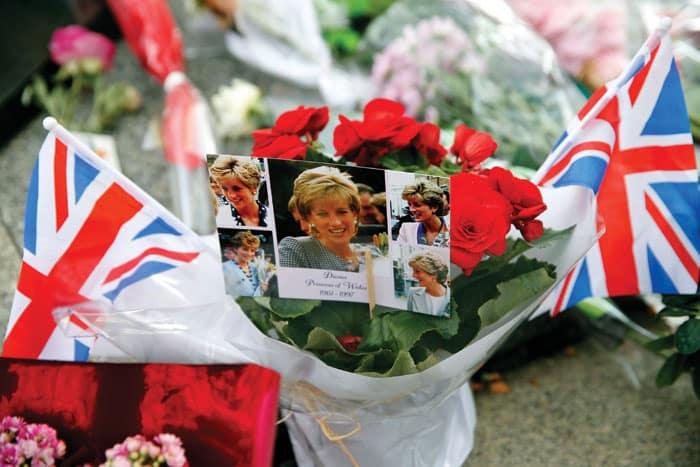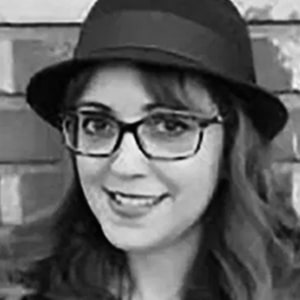 Thierry Chesnot/Getty Images
Thierry Chesnot/Getty Images August 31, 1997 was a very dark day. In fact, it can be likened to my generation’s version of asking, “Where were you when President Kennedy was assassinated?” That last day of August was the day that Diana, Princess of Wales, was killed in a horrific car accident in Paris.
In hindsight, it was amazing that one didn’t need to be British to feel tremendous shock and sadness over the death of a member of the British royal family. There was a reason that Diana was lovingly called “The People’s Princess”; she was beloved by millions worldwide. It’s safe to say she was the most famous woman in the world. And the fact that she died so young, at the age of 36, leaving behind two sons, William (15) and Harry (12), made her death even harder to digest.
This year marks the 25th anniversary of Diana’s death, and I remember where I was that day: lazily wasting away another long Saturday at home after finishing the eighth grade a few months earlier in June. That summer, I was struggling. I didn’t want to leave my beloved middle school and my graduating class of 80 friends and enter the overwhelming jungle of high school (complete with 2,000 students), so I clung to anyone and anything that offered me a sense of familiarity and comfort. Simply put, I was experiencing too much change in my own life and my tolerance for big changes in the greater world was pathetically low.
But that summer had already been marred by a horrible shock: Legendary Italian fashion designer Gianni Versace was assassinated in July when a gunman named Andrew Cunanan shot him in the head at point-blank range (Cunanan had previously gone on a killing spree, murdering four other men). Over 2,000 people attended his funeral at Milan Cathedral, including Carolyn Bessette-Kennedy, Elton John and Diana, Princess of Wales.
By the time I watched countless hours of television coverage of Diana’s death the following month, I was a different adolescent: marred by anxiety, sadness and a certain resignation to the idea that I had no control over my fate.
By the time I watched countless hours of television coverage of Diana’s death the following month, I was a different adolescent: marred by anxiety, sadness and a certain resignation to the idea that I had no control over my fate.
That’s because the deaths of Gianni Versace and Princess Diana were a blow to my entire belief system, however immature and flawed, that famous and powerful people who make an impact on the world are somehow spared from violent death. Or, at the least, that they’re immune to being shot in the head outside their Miami home (Versace) or killed when a Mercedes-Benz, driven at 70 mph in a 30 mph zone, collides miserably with a highway pillar in Paris’s Pont de l’Alma tunnel. Incidentally, Diana was still alive after the crash (her driver, Henri Paul, and her boyfriend, Emad “Dodi” Fayed, were pronounced dead at the scene, and Diane succumbed to internal bleeding a few hours later at a Paris hospital).
Twenty-two years later, in 2019, a top British forensic pathologist, Dr. Richard Shepherd, claimed that Diana would have survived the crash if she had been wearing a seatbelt, writing in his book, “Unnatural Causes,” that had Diana “been restrained, she would probably have appeared in public two days later with a black eye, perhaps a bit breathless from the fractured ribs and with a broken arm in a sling.” The only person to survive the accident was Trevor Rees-Jones, Diana’s British bodyguard, who had been wearing a seatbelt.
As a budding teenager who was already prone to fatalistic anxiety, I couldn’t comprehend the close timing of it all — that six weeks after sitting in solemn silence at Versace’s funeral, Diana herself would be dead. And Elton John would honor them at both of their funerals. Poor man.
And then, nearly two years to the day after Versace’s death (July 15), Carolyn Bessette-Kennedy, who had also attended his funeral, perished in a July 16 plane crash off the coast of Martha’s Vineyard, along with her husband John F. Kennedy, Jr. and her sister Lauren.
It was unbelievable, and I drove myself crazy wondering how it could be possible that, like Diana, Bessette had sat at Versace’s funeral without knowing that she herself would perish soon thereafter.
The day Diana died was also the day that many in my generation of adolescents first sympathized with a young person who had lost a mother. Still, handsome, strawberry-blonde-haired princes weren’t supposed to walk behind their young mother’s caskets, as William and Harry had done — for all the world to see, no less (2.5 billion people watched Diana’s funeral procession on television). In 2017, Harry told Newsweek, “My mother had just died, and I had to walk a long way behind her coffin, surrounded by thousands of people watching me while millions more did on television. I don’t think any child should be asked to do that, under any circumstances. I don’t think it would happen today.”
No, in 1997, those of us who weren’t yet born in 1963 and hadn’t watched the 1963 televised coverage of President Kennedy’s funeral weren’t ready for the sight of young, handsome princes, now motherless, walking behind a casket of a fallen princess. It was too much.
And then, there was the collective public disgust over the culpability of the paparazzi, who had chased down that Mercedes-Benz in order to snap a few photos of Diana and Dodi out and about in Paris. While it’s true that the driver, Paul, had been driving under the influence of alcohol (French authorities confirmed this the Monday after the accident), we were all reminded of the inhumane consequences of treating human beings solely as subjects of tabloid photographs.
After Diana’s death, one particular thought haunted me for a long time: I wondered if whether after the Mercedes crashed, there were paparazzi who, instead of rushing to help the victims, immediately flashed photographs of the wreckage. As it turned out, that’s exactly what happened.
One of those motorcycle-bound paparazzi who chased down Diana that night, Stephane Darmon, confirmed this to The Guardian in 2008. He said, “I did not see the car anymore because the light [of the flashes] was so bright. It was continuous.”
But Prince Harry summed up the inhumanity best in a 2021 Apple TV+ documentary, “The Me You Can’t See,” when he said, “I was so angry with what happened to her — and the fact that there was no justice at all. Nothing came from that. The same people that chased her into the tunnel, photographed her dying on the backseat of that car.”
And sadly, that kind of selective blindness not only remains today, but has almost become the norm. How many times have we read news stories of bystanders, whether in a New York subway tunnel or on a Los Angeles street, who, instead of even attempting to help victims of violence, have pulled out their smartphones and simply begun filming?
Yes, Diana herself became the most famous woman in the world thanks to the power of the lens, and the camera loved her. But the disregard for humanity that added an extra sting to her death was anathema to every ounce of kindness and compassion the woman valued and practiced.
I watched her September 6, 1997 funeral seated next to my mother, and when she began to sob at the sight of William and Harry walking in solemn procession, I hugged my mother and stroked her hair. After that day, my eyes were irreversibly open wide.
Tabby Refael is an award-winning weekly columnist and an LA-based writer, speaker and civic action activist. Follow her on Twitter @TabbyRefael





















 More news and opinions than at a Shabbat dinner, right in your inbox.
More news and opinions than at a Shabbat dinner, right in your inbox.